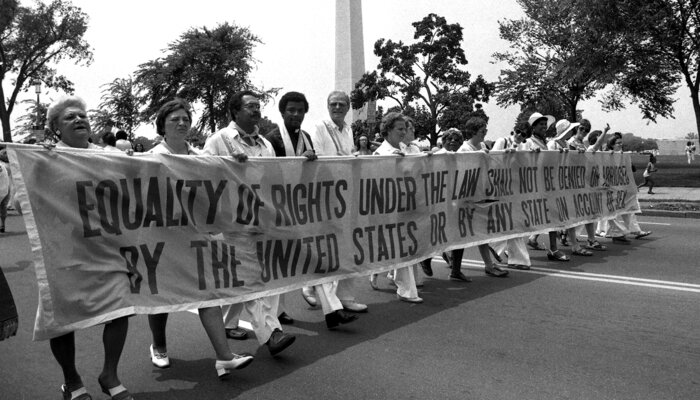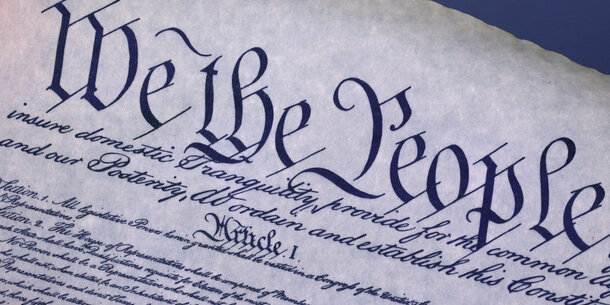Last week, the nation commemorated the centennial of the ratification of the 19th Amendment and reflected upon its incomplete promise — and the long road that followed to achieve suffrage for all women. Today is Women’s Equality Day, created following a resolution proposed by the late Rep. Bella Abzug in 1971 and passed by Congress two years later to acknowledge the struggle to achieve gender equality in all facets of American life.
So much of women’s standing and power in this country is inextricably tied to the vote. Women are now the majority of the electorate. And yet, while the numbers show that women participate voraciously in civic life and outnumber men at the polls, our representation in the halls of power continues to lag.
Following the passage of the Voting Rights Act of 1965, more women have voted than men in raw numbers in every presidential election. Since 1980, the proportion of eligible women who voted has been higher than the men’s equivalent. Black women show up at the polls in even more striking numbers, with turnout rates of upwards of 60 percent.
An undeniable force in the electoral system, why don’t women’s votes translate to equal representation in political presence and policy prioritization?
According to the Pew Research Center, around three-quarters of women and 60 percent of men said it was easier for men to reach high political office. A majority of those polled believe it is because women must do more to prove themselves than men. About half also attribute it insufficient support from party leaders, as well as overall gender discrimination. Intersections of Our Lives, a reproductive justice coalition, conducted a 2019 survey in which 78 percent of the women of color who participated reported that candidates fail to focus on the issues that matter to them.
But we may be witnessing the start of a sea change. For the first time in our country’s history, a woman of color is the Democratic vice presidential candidate. Six women ran for president this year; despite a barrage of reporting on likability (and its evil twin, an overage of ambition), they ran competitive campaigns. And the number of women of color candidates for seats in Congress is also at an all-time high: 267 women are running in 2020, 130 of whom are Black.
Significant victories may push us closer to a Congress more representative of America, where there are currently 127 women serving — 26 in the Senate and 101 in the House. Forty-eight are women of color — that’s 9 percent of all 535 members — despite that women of color are 20 percent of the general population.
State legislatures are only slightly more representative. In 2020, less than a third (29 percent) of the 7,383 state legislators nationwide are women, who hold 519 of the 1,972 state senate seats and 1,637 of the 5,411 statehouse or assembly seats. Women of color are represented at only 7 percent. In 2017, Virginia Delegate Danica Roem won her race as the first openly transgender person elected to any state legislature in America, breaking new ground. The Center for Public Integrity reported that at least 51 transgender people ran for federal, state, or local office the following year, with wins in New Hampshire and Colorado.
And while there are a handful of high-profile women executives — like Michigan’s trio of leadership (governor, attorney general, and secretary of state) and the mayors of major cities like San Francisco, Atlanta, and Chicago — even the states that have the best representation for women in legislature just barely hover around the 50 percent mark. Nevada is the only state in the nation with majority representation by women at 52 percent.
In order for women’s voting voice to become an equal voice in decision making, the systems themselves must be part of the solution. In terms of what it takes to run for office, and especially what it takes to fund a campaign, reforms that actively spur more diverse representation are crucial. With their reliance on small donors, for example, women running for office are said to have to work twice as hard to raise the funds needed to campaign (a successful U.S. House race costs an average $1.5 million). Conversely, women are less represented in the top donor class, exacerbating the disparate impact of an already broken system. Public financing of campaigns would reduce the disparity in participation based on wealth, while helping empower groups who historically have held less leverage in the political process.
Voter suppression and barriers that hamper participation ultimately shape policies that impact women. Reproductive justice issues —spanning healthcare, the environment, gun safety, workplace, education, menstrual equity — are among those that are most compromised by systemic failures. At the Democratic National Convention last week, a mother whose child was critically wounded by gun violence shared her painful truth: “The child that I birthed is not able to live his dreams.”
That is the essence of the distinct power of a woman’s voice. We must focus on the reforms that will ensure the promise of representation not only at the ballot box, but fully, fairly — and finally — in the halls of power too.
The views expressed are the authors’ own and not necessarily those of the Brennan Center. The authors acknowledge Hazel Millard for her research that is reflected in this piece.




